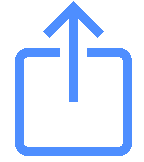Can you imagine navigating a city as vast and dynamic as Dubai without ever getting stuck in traffic or needing to worry about parking? The Dubai Metro is not merely a transport system; it’s the driverless, fully automated backbone of urban life here, offering a remarkably efficient, clean, and often breathtakingly scenic way to connect the historic souks with the futuristic skyscrapers and avoiding the notorious congestion on Sheikh Zayed Road. This comprehensive guide provides you with all the essential, up-to-date information on how to master the metro, from understanding the Nol card system and the zone-based fares to knowing the local rules and operating hours, which ensures your journey is always smooth and stress-free.
Understanding the Dubai Metro’s Lines and Reach
The Dubai Metro system is remarkably straightforward, currently operating with two main lines that serve the entire city effectively. You have the Red Line, which is the longest and most famous, running from Centrepoint (formerly Rashidiya) near the airport all the way down to Expo City Dubai, covering most of the major landmarks along the way. This line is the one you will use most frequently for destinations like the Burj Khalifa/Dubai Mall station, the Mall of the Emirates, and the Dubai Marina area, giving you fantastic elevated views of the city.
Then there is the Green Line, which generally covers the older, historic parts of Dubai, providing crucial links to areas like Deira and Bur Dubai. Stations like Gold Souq and Al Ghubaiba put you right in the heart of the traditional markets and the Dubai Creek, which is perfect for tourists wanting to explore the city’s heritage. The two lines intersect at two major interchange stations, Union and BurJuman, which allows for easy, seamless transfers without leaving the paid area, making your transit between Old and New Dubai incredibly convenient. You are allowed a maximum transfer time of 30 minutes between different modes of transport, including the tram and bus, which counts as a single continuous journey under the fare system.
The Nol Card: Your Essential Travel Pass
To ride the Dubai Metro, you absolutely must use a Nol card, which is the city’s integrated smart card system for all public transport, including the bus and the Dubai Tram. You cannot pay for your metro journey using cash at the turnstile, which makes the Nol card your crucial gateway to the network. There are four main types of Nol cards, and knowing the difference between them helps you choose the most economical option for your specific travel needs.
The Red Nol Ticket is a paper ticket that costs approximately two Dirhams to purchase and is ideal for short-term visitors or single-journey users, as you can load it with up to ten single trips. However, the Red Ticket charges a slightly higher fare per journey compared to the prepaid options. The Silver Nol Card is the most popular choice for residents and longer-term tourists; it costs about 25 Dirhams, and you get about 19 Dirhams of e-purse value immediately on the card. This card offers lower per-trip fares and is valid for five years. Finally, the Gold Nol Card, which also costs around 25 Dirhams, gives you access to the exclusive Gold Class cabins on the metro and tram for a premium fare, which is worth considering if you prioritize comfort and quieter carriages, especially during peak hours. Always ensure your card has a minimum balance of approximately 7.50 AED before starting your journey, as the gates won’t let you check in otherwise.
Understanding the Zone-Based Fare System
The pricing structure for the Dubai Metro is based entirely on a zone system, which means the cost of your journey depends on the number of fare zones you cross from your starting station to your destination station. Dubai is divided into seven transport zones by the Roads and Transport Authority (RTA), which allows for fair pricing based on the actual distance you travel. Essentially, the system has three main tiers for travel fares.
The lowest fare applies if you travel within a single zone or cross less than 3 kilometers, which is ideal for short hops between neighboring stations. The medium fare applies if you travel across two neighboring zones, which is a common scenario for medium-distance commutes. The highest standard fare is applied if you cross three or more zones, covering the city’s longest end-to-end journeys. Using a Silver Nol Card provides the most cost-effective fares under this structure, with the most expensive standard journey costing approximately 7.50 AED. Remember that you must always tap your Nol card on the reader when you enter a station (check-in) and when you exit a station (check-out); failing to check out properly will result in the maximum possible fare being deducted from your card, which is a mistake that many newcomers often make.
Operating Hours and Peak Travel Times
The Dubai Metro runs on a consistent schedule, which makes planning your travel extremely reliable, though the timings shift slightly on the weekends in line with the UAE’s work and leisure culture. Generally, the Metro operates from about 5:00 AM to 12:00 AM (midnight) from Monday to Thursday and Saturday. On Fridays, the service extends until about 1:00 AM the following morning, accommodating the late-night activities and the start of the weekend.
The one exception is Sunday mornings, when the metro service starts later, typically around 8:00 AM, so you should keep this in mind if you plan an early Sunday trip. During peak hours, trains arrive incredibly frequently, often every two to three minutes, which ensures minimal waiting time for all passengers. Off-peak hours will see trains running every five to seven minutes, which is still a very impressive frequency for a modern urban railway. The rush hour periods in Dubai generally follow international norms, running roughly from 7:30 AM to 9:00 AM and again from 5:30 PM to 7:30 PM, so if you prefer a quieter journey, you will find the most comfortable experience outside of these busy times.
Essential Rules and Cultural Etiquette
Riding the Dubai Metro is an incredibly comfortable experience due to the strict rules on cleanliness and conduct that the RTA enforces, which maintains the system’s pristine condition. There are several key rules you must follow to avoid hefty fines that the uniformed RTA staff actively issue. Eating, drinking, and chewing gum are strictly prohibited everywhere within the metro trains and the station platforms, which helps keep the environment immaculate for everyone.
Another important rule is the designated Women and Children’s Cabin, usually located at one end of the train. Men are not allowed to enter this specific carriage, and failing to respect this can result in a fine, as this segregation is put in place to ensure comfort and privacy. If you have a Gold Nol Card, you must only use the Gold Class cabin, as standing in this section with a regular Silver or Red Card will also incur a penalty. You are allowed to carry up to two pieces of luggage, specifically one large suitcase and one small carry-on bag, and you must use the designated luggage areas. The enforcement of these rules is very visible and consistent, which really contributes to the Metro’s reputation as one of the world’s cleanest and safest public transport networks.
Connections to Other Transport Modes
The Dubai Metro is not an isolated system; it forms the backbone of the city’s interconnected public transport network, which is a major benefit for seamless travel. At key locations along the Red Line, the metro connects directly to the Dubai Tram, most notably at the Sobha Realty and DMCC stations, providing easy access to the Dubai Marina and Jumeirah Beach Residence (JBR) areas. This connection is vital for reaching the coastal districts and is also covered by your Nol card.
Furthermore, many metro stations, especially those in the older areas like Al Ghubaiba and Union, provide seamless links to the RTA’s expansive bus network and even to the water taxis and abras that cross the Dubai Creek. The connection at Burj Khalifa/Dubai Mall station features a long, air-conditioned walkway directly into the massive mall, which is a huge convenience during the summer heat. This integration means you can plan a complete journey from your hotel to the beach or from the airport to the Gold Souk using just your Nol card, often requiring only a single fare deduction within the allowed transfer time.
Recommendations from the Editor of www.few.ae
As the editor of www.few.ae, my top advice for first-time metro users is to always purchase the Silver Nol Card. The initial cost is quickly offset by the lower fares, and it offers the flexibility you need for exploring the city over several days or weeks. I also highly recommend using the metro for your transfer from Dubai International Airport (DXB), as both Terminals 1 and 3 are directly on the Red Line, which is an extremely efficient and low-cost alternative to a taxi. Be sure to check the RTA’s official ‘S’hail’ app, which acts as a great journey planner and provides real-time updates and an accurate fare calculator, which ensures you never miss a connection or get caught out by unexpected timings. The metro’s elevated tracks provide some fantastic, free views of the city’s architectural feats, so remember to look out the window, particularly on the stretch between the World Trade Centre and the Mall of the Emirates—it’s a sightseeing trip in itself.
Practical Tips for Smooth Metro Travel
To ensure your metro experience is as smooth as possible, you will want to remember a few key practical tips. First, you should always tap and hold your Nol card firmly on the gate reader both upon entering and exiting the station, waiting for the green light and the audible beep, because a quick tap sometimes fails to register the transaction properly. Always be prepared for your stop, especially in the central areas, as the doors open and close very quickly to maintain the punctuality for which the system is famous.
During crowded peak hours, you will notice people forming orderly queues at the platform edge where the carriage doors stop; this is a local courtesy and should be followed to ensure quick, efficient boarding. For recharging your Nol card, you can use the ticket vending machines available at all stations or visit the customer service windows, but you should know that the minimum top-up is typically around 20 AED at the machines and approximately 50 AED at the ticket desks. Also, remember that the metro can be a little chilly due to the strong air-conditioning, which is a welcome relief from the outside heat, but it is always smart to carry a light cover-up, especially if you plan to be on the system for a long time.


 then "Add to Home Screen"
then "Add to Home Screen"